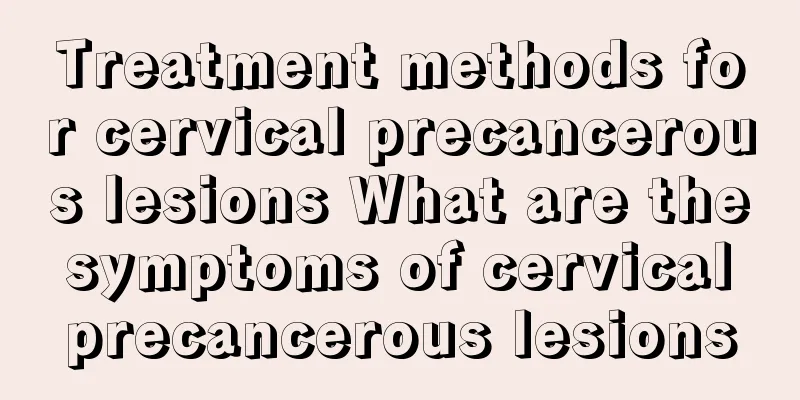What are the treatments for bile duct cancer? Experts point out 5 steps to prevent and treat liver cancer

|
5 Steps to Liver Cancer Prevention and Treatment Liver cancer is not something to be feared. As long as it is properly prevented and treated, you can stay away from the harm of liver cancer. The prevention and treatment of liver cancer can be divided into 5 steps. 1 is 1 basic concept Liver cancer mainly occurs in relatively specific groups of people, which are often referred to as high-risk groups in clinical practice. The high-risk groups for liver cancer in my country mainly include patients with hepatitis B and hepatitis C, patients with cirrhosis, men over 40 years old, or people with a family history of liver cancer. Patients with cirrhosis caused by non-viral hepatitis are also at high risk of liver cancer, but the risk is much lower than that of viral hepatitis. These people should pay special attention to the prevention of liver cancer. 2 means two central concepts People at high risk of liver cancer should establish two concepts, namely active prevention and early diagnosis. Actively treat basic liver diseases such as viral hepatitis to prevent or alleviate the progression of liver fibrosis to the greatest extent; stay away from environmental factors such as water pollution and spoiled food; maintain a healthy mental state and other measures to help prevent liver cancer. Early diagnosis is the key to improving the efficacy of liver cancer treatment. 3 means 3 screening items Liver function, alpha-fetoprotein and liver ultrasound are scientific and effective ways to screen people at high risk of liver cancer. Generally speaking, people at high risk of liver cancer should be screened every 3 to 6 months. When alpha-fetoprotein is elevated or ultrasound indicates liver space-occupying lesions, further examinations such as CT, MRI or arteriography should be performed until liver cancer is completely ruled out. 4 means 4 major treatment measures Treatment measures for liver cancer include four major categories, namely surgical treatment, local treatment, interventional embolization therapy, and drug therapy. 5 means 5-year survival goal As long as people at high risk of liver cancer have a clear self-positioning and are able to "tirelessly" undergo regular screening, early diagnosis of liver cancer will no longer be difficult, and it will no longer be difficult for liver cancer patients to achieve a five-year survival period. What are the treatments for cholangiocarcinoma? Intrahepatic cholangiocarcinoma is a clinical pathological type of primary liver cancer, accounting for about 5% to 30% of primary liver cancer. Intrahepatic cholangiocarcinoma has a low incidence, lacks specific clinical manifestations in the early stage, has a low diagnosis rate, is insensitive to radiotherapy and chemotherapy, and therefore has a poor prognosis. The specific contents of the prognostic factors analysis and treatment of intrahepatic cholangiocarcinoma are as follows: Surgery Some scholars have found that hepatitis B virus infection is closely related to the incidence of primary intrahepatic cholangiocarcinoma, and some causes of hepatitis B virus may play an important role in the mutation of cholangiocarcinoma. At the same time, most clinical studies have shown that radical resection is the main treatment for long-term survival of intrahepatic cholangiocarcinoma. In a group of correlation studies, the survival of 56 surgical patients who underwent radical resection was 36 months, and that of palliative resection was 10 months. Multivariate survival regression analysis showed that the surgical method was an independent prognostic factor, with a relative risk RR=0.175, indicating that radical surgery is a protective factor. Therefore, all intrahepatic cholangiocarcinomas should be judged by experienced hepatobiliary surgeons as much as possible to avoid missing the opportunity for radical surgery. Experts pointed out that although intrahepatic cholangiocarcinoma is often accompanied by elevated serum alanine aminotransferase and aspartate aminotransferase, both are non-specific because their serum levels are elevated in many diseases such as hepatitis, cirrhosis and hepatocellular carcinoma. Nonsurgical treatment Experts point out that the median survival time of non-surgical patients is only 9 months, which may be related to the fact that most patients already have intrahepatic or extrahepatic metastases at the time of diagnosis. For patients with intrahepatic cholangiocarcinoma who cannot undergo surgery, the incidence of jaundice is lower than that of hilar and extrahepatic cholangiocarcinoma due to the location of the tumor. Therefore, the commonly used palliative treatment methods are mainly chemotherapy, local radiotherapy and autologous immune cell therapy. For obstructive jaundice caused by large tumors, biliary stent implantation or percutaneous liver puncture and external biliary drainage can also be used. In general, chemotherapy has a low efficacy for intrahepatic cholangiocarcinoma. Chemotherapy regimens mostly use 5-FU alone or combined chemotherapy regimens based on 5-FU. However, due to the toxic side effects of chemotherapy drugs, they will have great toxic and side effects on the human body. Therefore, for patients who cannot undergo surgery, palliative chemotherapy has a low effective survival rate for patients, which will also affect the prognosis of intrahepatic cholangiocarcinoma. . Therefore, it is often recommended to combine autologous immune cell therapy in clinical practice to improve the patient's autonomous anti-tumor immunity, improve the patient's overall physical condition, increase the local control rate of tumors, and improve prognosis. How should intrahepatic cholangiocarcinoma be treated? What method has the best treatment effect? |
<<: What causes cancer patients to die? What are the symptoms that can relieve lung cancer patients?
Recommend
Does jogging consume a lot of energy?
Fitness has become a favorite among urban people ...
Can I wear slippers during confinement?
People of different races have different physique...
How to make your buttocks bigger and more perky
Many women undergo body shaping in order to be mo...
The efficacy and function of garlic tablets
Allicin is a nutrient extracted from garlic. It p...
Are removable dentures better or fixed ones?
In life, some people have their teeth knocked out...
How do prostate tumors come about
Prostate tumors belong to urology, and most of th...
What are the methods to prevent cervical cancer? What are the nursing measures for cervical cancer patients?
Usually we need to pay attention to cervical canc...
What is the reason why the stomach sometimes jumps
Sometimes you may feel your stomach skipping a be...
How to exercise lung capacity at home
Lung capacity is generally used to detect human a...
What obvious harms does small cell lung cancer bring
Patients who may have small cell lung cancer afte...
Why is kidney cancer called lucky cancer
The saying that kidney cancer is called a lucky c...
What is Adams-Stokes syndrome
Many friends are unfamiliar with the disease call...
How to choose a refrigerator
For many friends who are about to get married, bu...
How many years does it take for ovarian cancer to develop? What should I eat to prevent ovarian cancer?
Ovarian cancer is one of the three most common ca...
10 signs of health from the tongue that indicate a serious illness is coming
Sometimes when we go to see a doctor, the doctor ...









